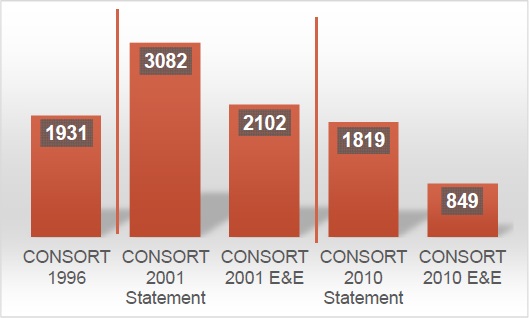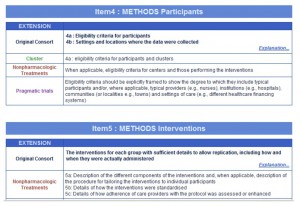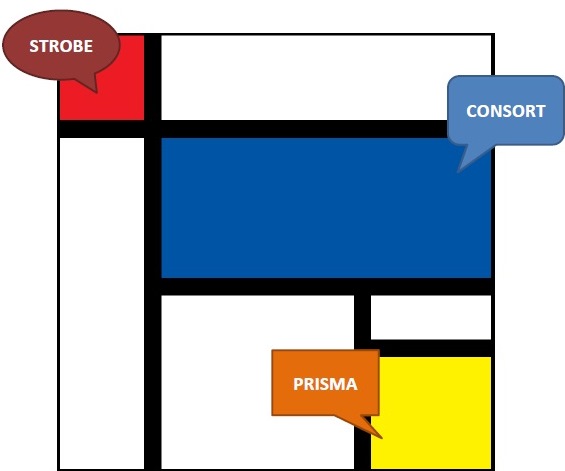 With the advent of the AllTrials initiative, the EU Clinical Trials Regulation and the recent Tamiflu debacle, randomized controlled trials (RCTs) have received a lot of attention over the last 12 months. Despite all this recent furore surrounding the reporting of RCTs, there are those of us who have been banging this drum for a while.
With the advent of the AllTrials initiative, the EU Clinical Trials Regulation and the recent Tamiflu debacle, randomized controlled trials (RCTs) have received a lot of attention over the last 12 months. Despite all this recent furore surrounding the reporting of RCTs, there are those of us who have been banging this drum for a while.
These are nothing new, and it was in 1994 that a group of determined researchers, collaborating with medical journal editors, published SORT, which was to become the first Consolidated Standards of Reporting Trials (CONSORT) statement in 1996. Twenty years later, the CONSORT Group held its most recent meeting in the Château d’Ermenonville, Paris, which I was delighted to have the opportunity to participate in.
What impact has the CONSORT Statement had?
Since its initial publication, the CONSORT Statement has seen two updates in 2001 and 2010, almost 10,000 citations, countless extensions and implementation documents, and even its very own Twitter feed. Indeed, research has shown that reporting improves in journals that use CONSORT, but many problems with reporting still exist. The CONSORT Statement itself seems to be well accepted, but its actual implementation needs improvement.
One measure of impact is the number of journals that ‘endorse’ the guidelines. This is typically given in a statement in their Information for Authors, with over 600 journals currently endorsing CONSORT. In 2005, Altman found that 22% of high-impact journals endorsed the CONSORT Statement, and Hopewell showed that this increased to 38% in 2008. Larissa Shamseer is in the process of updating this based on the 2011 Journal Citation Reports and has found that, of the top 10 general and top 5 specialty journals, 59% endorse the guidelines (not published).
However, implementation of the guidelines has proved haphazard and passive. A recent systematic review by Turner et al. suggested that, while those journals that included a statement endorsing the CONSORT Statement were associated with improved reporting of some items, a number of key elements defining a clinical trial showed no improvement and are still poorly reported.
Barriers to adherence
 So why are these problems persisting? Philippe Ravaud pointed toward a lack of awareness and lack of familiarity as leading barriers to implementation.
So why are these problems persisting? Philippe Ravaud pointed toward a lack of awareness and lack of familiarity as leading barriers to implementation.
This was supported by Shamseer, who highlighted that, while the 2010 update is increasingly cited, citations are still increasing for the 1996 and 2001 CONSORT Statements. Furthermore, while many researchers are aware
of the main CONSORT Statement, there has been an explosion in the number
of CONSORT extensions, as well as other relevant reporting guidelines that researchers need
to adhere to.
We are facing a ‘problem of success’ as Jeremy Grimshaw put it – the world of reporting guidelines has moved from Miró to Pollock, with over 200 guidelines listed on the EQUATOR Network. With such a profusion of reporting guidelines, researchers simply don’t know where to turn. Therefore, the challenge is to establish adherence to the existing guidelines, rather than continue to update them – writing them is easier than making them work.
Simplifying the CONSORT landscape

Philippe Ravaud proposed a potential solution to help researchers identify the relevant guidelines. In the WebCONSORT trial, his team is evaluating a simple web-based tool to integrate the various CONSORT extensions into a bespoke checklist for the author. They will evaluate the impact of the tool based on the number of CONSORT items reported in manuscripts revised using the tool, compared with those without.
Similarly, David Moher presented on the CONSORT Checklist Management System (CMS). This web-based software-as-a-service tool offers an interactive, item-by-item guide through the CONSORT 2010 checklist, allowing users to highlight and link text associated with each checklist item, and tracking the completion of each item, providing a checklist fulfilment report. The aim of the CMS is to allow interaction between authors, journals and peer reviewers during the editorial review process, and remove CONSORT as a pain point.
This was an aim shared by Ida Sim, who is involved in the development of the ExaCT Extraction System, which assists users with locating and extracting key trial characteristics (e.g. eligibility criteria, sample size, drug dosage, primary outcomes) from full articles.
The advent of these exciting new initiatives should help to clarify and simplify the CONSORT landscape; however, these are only aids and, as Grimshaw stated, it all comes back to a simple questions: Who needs to do what differently?
What can we do?
Nikolaos Pandis gave an interesting case study for this, in the guise of the American Journal of Orthodontics and Dentofacial Orthopedics (AJODO). The journal began an active endorsement of the CONSORT Statement in 2004, whereby the checklist was required on submission; however, this did not show the improvements in reporting that they had hoped for. In 2011, CONSORT was integrated into the review process, in order to give CONSORT-specific feedback to authors regarding their submissions. This has seen a marked improvement in the reporting standards of the articles published; however, it has also proved time-consuming, with many revisions sometimes required.
Jason Roberts presented an alternative model for small and medium-sized journals, whereby the checklist was both provided and captured on submission. Software would then automatically scan the articles for compliance and highlight (potential) omissions. This was demonstrated with the StatReviewer beta.
 These initiatives show the huge amount of work that is going on to improve reporting standards in clinical trials, and to make adherence as simple as possible for authors. There is a need to coalesce all these efforts in to a focused campaign to encourage adoption and proper use:
These initiatives show the huge amount of work that is going on to improve reporting standards in clinical trials, and to make adherence as simple as possible for authors. There is a need to coalesce all these efforts in to a focused campaign to encourage adoption and proper use:
– Streamlined web presence
– Tools to aid authors
– Educational resources
– Awareness campaign
While the current CONSORT landscape may have moved from Miró to Pollock, a concerted, simplified approach is needed, not only for RCTs, but all study types. Whatever happened to Mondrian?
You can read more about the EQUATOR scientific meeting and annual lecture on our blog.
2 Comments